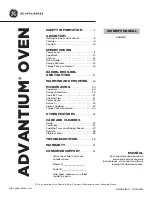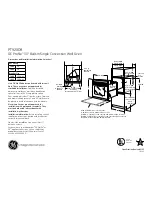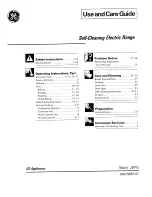
3.
Solid 1.1" GN pans are used for meat, pasta, pies (pastries and desserts in general) and fried food.
4.
The grids are mainly used to prepare roasted meat, grilled food and as support for other metal or
refractory containers used in the oven.
5.
GN pans with a depth higher than 4" (up to 7") are more appropriate to distribute and transport food -
mainly rice, stews, beans and other type of side order food.
6.
Waved GN pans are specifically used for French bread and baguettes.
7.
Expanded Mesh GN pan. Only a little bit of oil is needed to fry any kind of food in this type of GN. It is
used to fry vegetables (potato, scarlet eggplant, okra), meat (chicken) and several other food.
8.
Tower grill. Used to roast a whole chicken. The chicken is placed standing on the grill, and the wings
are placed up and behind the chicken's neck.
9.
Lids1/1. They fit all types of GN pans.
Observation:
The same happens when cooking vegetables. When using perforated GN pans the vegetables will be
more dry, perfect for a salad. If using solid GN pans, part of the steam condensates in the bottom and
the liquid is incorporated in the food seasoning. The structure of the vegetables is kept intact since
there is no shock provoked by the boiling water If you want
juicier vegetables, all you have to do is to add more water.
GUIDELINE TABLE:
It is important to notice that the first column of the table shows the product (food) and the second one
suggests the type of GN pan to be used. The three columns display the oven programming process:
key, temperature and time. The last column shows any observations about the product, regarding the
seasoning, oil and so forth. Some food preparation show two or three different lines (for example:
stuffed beef rolls), that is, program the first line and the other line afterwards. Therefore, the
preparation of that dish will have two or more different steps.
The type of GN pan to be used depends on the way you want to have the food
prepared.
For instance, if you have four pieces of boneless pork tenderloins and organize them
inside the oven - one boneless pork tenderloin over one grid; the second boneless pork
tenderloin in a perforated GN 2.5" deep, the third piece in a solid 1.1" (shallow); and the
fourth boneless pork tenderloin in a solid GN 2.5", at the end of a determined period of
time and temperature you will have four different dishes as follows:
• Boneless pork tenderloin over a grid:
Totally brown (the entire outer surface)
showing a low content of fat (the fat melts during the process). In this case, there was
no heat flow.
• Boneless pork tenderloin placed in the perforated GN 2.5": Partially golden (mainly in
the upper surface) and also showing a low content of fat (also drained during the
process) because GN walls provided resistance to the heat flow.
• Boneless pork tenderloin placed in the solid GN 30 mm (shallow):
The pork will
be almost entirely golden, its lower part, not golden yet, will be surrounded by juices
and fat drained during the baking process because of little resistance to the heat flow
and liquid retention.
• Boneless pork tenderloin placed in a solid GN 2.5" (average GN):
In this case,
the meat will be less golden compared to the others and will be partially immersed in
juices and fat caused by a lower heat flow.
12
Содержание EC3
Страница 1: ...EC3 COMBI OVEN INSTALLATION AND OPERATION MANUAL ...
Страница 2: ......
Страница 24: ...NOTES ...
Страница 25: ...INSTALLATION AND OPERATION EC3 COMBI OVEN ...
Страница 26: ......
Страница 27: ......














































